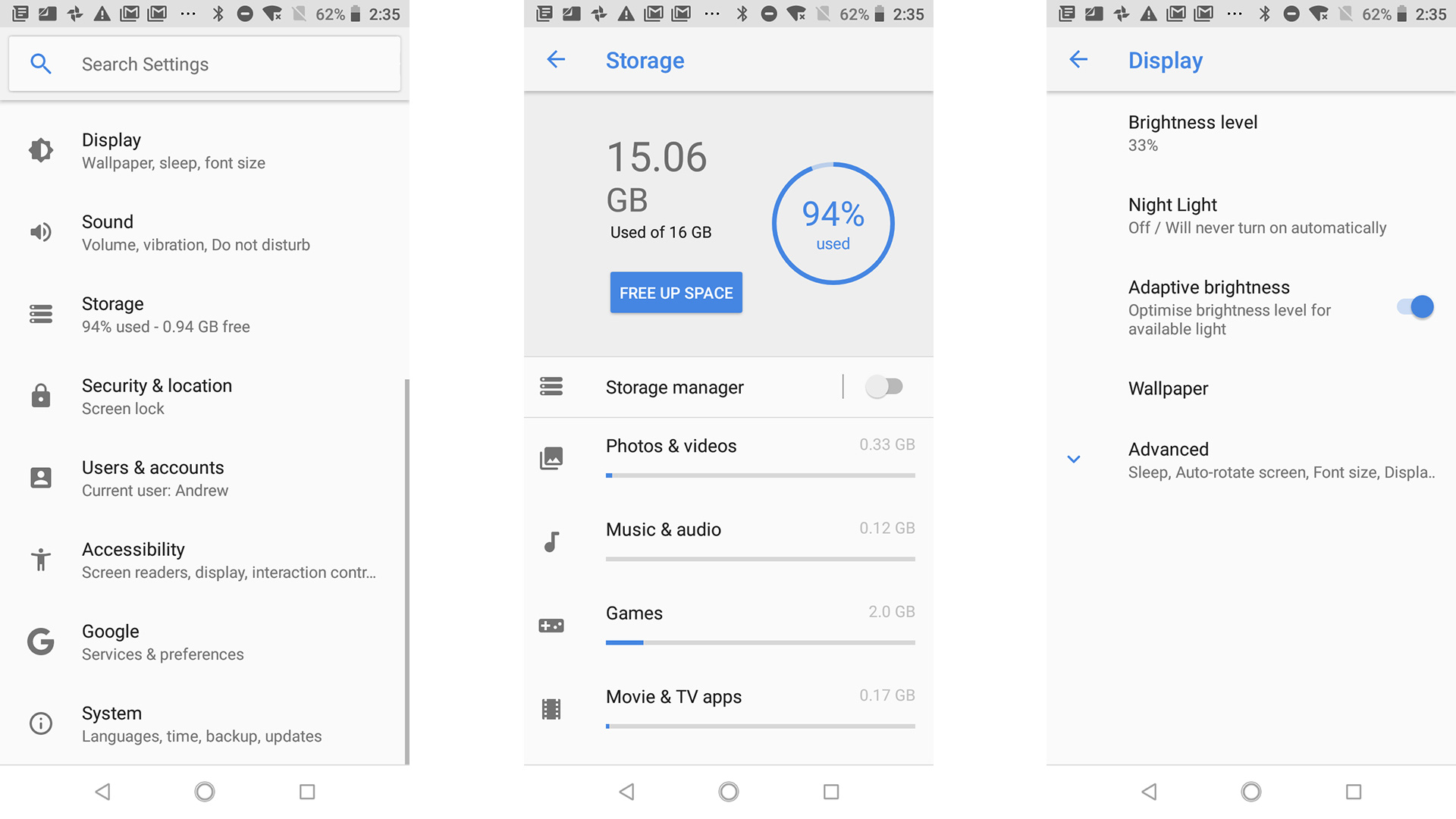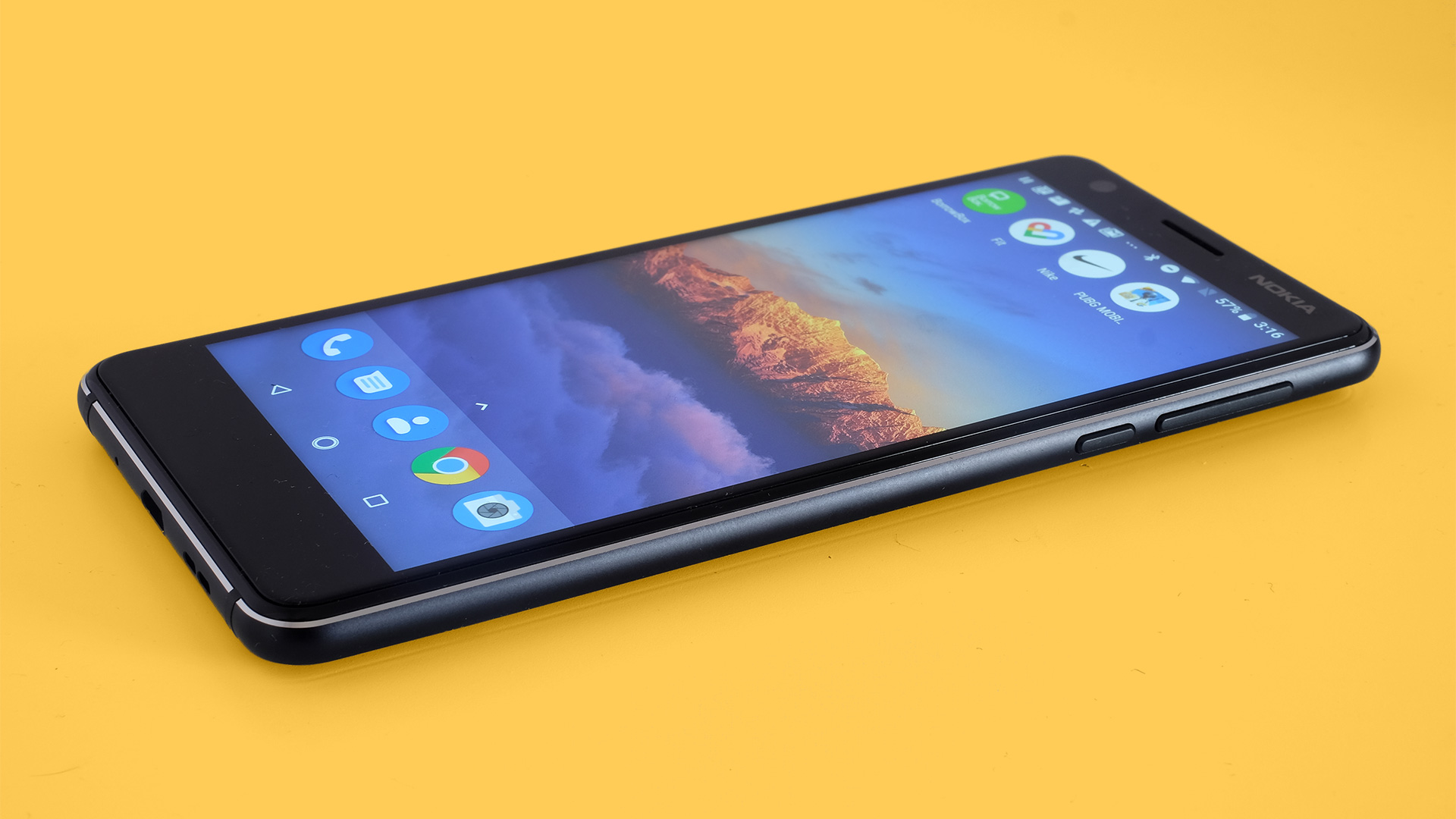Why you can trust TechRadar
Software
- Android One
- Android 8.1
- Very poor performance
The Nokia 3.1 is an Android One phone. This is a program that manufacturers sign up to, a sort-of agreement between Google and the maker, where their phones use a near-vanilla version of Android without bloat.
You get a guarantee of two years of software updates and three years of security updates as part of this package.
The clock on these starts ticking when the phone’s released (May 2018 in the case of the Nokia 3.1), not when you buy it, of course.
HMD Global (the maker of recent Nokia phones) is the biggest proponent of Android One, and it is usually a great way to experience Android. The software’s look is very similar to that of a Google Pixel phone, but a Nokia 3.1 is just a fraction the cost of a Pixel 3.

The Nokia 3.1 comes will the full basic Google suite installed, but no other extras beyond an FM radio.
There are some issues, though. The Nokia 3.1 runs Android 8.1 rather than the more recent Android 9.0. You’d expect timely updates to be part of Android One’s appeal. This phone shows that is not quite the case. At the time of writing some regions have now started getting Android 9 though, so it is coming eventually.
Performance is the real issue, though. The Nokia 3.1 is a very, very slow phone. Virtually every action is affected by lag. Phones like the Vodafone Smart X9 and Moto G7 Play let you sail through the Android interface quite happily. The Nokia 3.1 makes it feel as though you have to wade through each screen.
Sign up for breaking news, reviews, opinion, top tech deals, and more.
App loads are often interminable, making the Nokia 3.1 no fun to use at all. There’s no price-related excuse for this either. $159 / £149.99 / AU$248 is not that cheap and is far too much to pay for this sort of headache-inducing experience.

Games and movies
- Solid-enough gaming performance
- Very limited storage for games and media
- Weak speaker
There is some minor good news after all that. Despite the terrible general performance, the Nokia 3.1 is perfectly capable of handling streamed video and most games.
While the 5.2-inch screen seems a little small to watch movies or even full-length TV episodes on, content streamed at 720p looks great. The internal speaker is thin-sounding, but as there’s a headphone jack you can just plug in a pair of earphones or headphones.
Results with relatively high-end games are solid too. Asphalt 8 does not maintain a locked, smooth 30fps at High graphics, but it is both playable and enjoyable before you lower the graphics at all.
PUBG will only run at Low graphics, which is the norm for lower-end phones like the Nokia 3.1. However, it runs fairly well, with the odd frame rate dip.
Ark: Survival Evolved is not supported at present. You can’t even install it. This is likely because the phone does not support the Vulkan graphics standard yet. This may change when the Nokia 3.1 gets an upgrade to Android 9, but as the game also ‘requires’ 3GB of RAM, it may not.

The Nokia 3.1 handles games better than it does everyday use. However, this is still a very poor gaming phone, especially as it has just 16GB of space, over half of which is taken up by Android.
The Nokia 3.1 also seems to have an issue of data creep, where data freed by uninstalling apps seems to get sucked-up behind the scenes near-instantly.
16GB used to leave you with enough room to install a couple of data-heavy games, but you’ll struggle to fit one on the Nokia 3.1 without seeing the 'low storage' alert.
Performance
- Poor CPU power for 2019
- Octa-core MediaTek MT6750 chipset
- 2GB of RAM
The Nokia’s 3.1's very poor performance can largely be leveled at a couple of core specs. We are reviewing the UK version of the phone, which has 2GB of RAM and (like other variants) a MediaTek MT6750 chipset.
Over the last year we’ve encountered a few phones that run very poorly with low-end MediaTek hardware, such as the Honor 7S. This is just another example, it seems.
The MT6750 is an octa-core chipset with eight Cortex-A53 CPU cores and a dual-core Mali-T860 graphics chip. This was announced in mid-2016 and has been used in a great many low-price phones, particularly those of Chinese manufacturers like Meizu and Doogee.
On paper it should easily have enough power to make the Nokia 3.1 run acceptably. Geekbench 4 scores suggest this too. The Nokia 3.1 scores 2,625 points. This is well below the 4,200-odd points the Moto G7 Play achieves, but similar to the score of 2018’s excellent Moto G6 Play.
Current page: Anything else I should know?
Prev Page Battery life and camera Next Page Verdict and competition
Andrew is a freelance journalist and has been writing and editing for some of the UK's top tech and lifestyle publications including TrustedReviews, Stuff, T3, TechRadar, Lifehacker and others.
